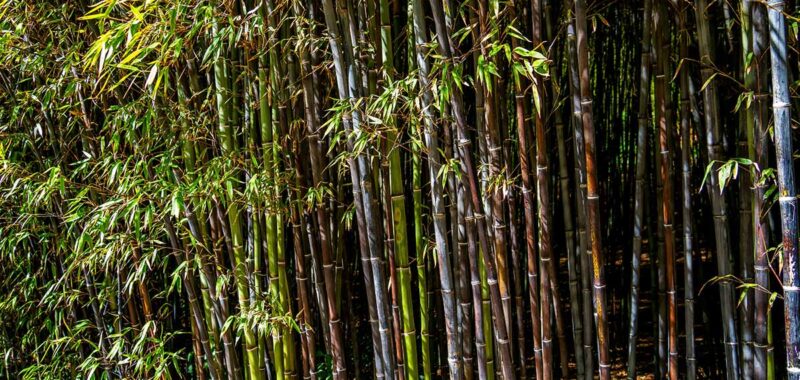Fertilizing
Although P. nigra doesn’t require fertilizing when planted in humusy, nutrient-rich soil, they do enjoy regular feeds during the growing season to promote fast growth and thick, lush foliage.


In late winter, gently work in a two-inch top dressing of compost, rotted manure, or worm castings to add nutrients and tilth.
Work it carefully into the soil over the root zone with a hand fork.
As soon as new growth emerges in early spring, scratch in some slow release fertilizer granules and repeat again in early summer.
For best results, use a formula that’s high in nitrogen – many lawn fertilizers are suitable provided they don’t have weed-killing ingredients included.
Down to Earth Bio-Turf is formulated for lawns with an NPK of 8-3-5 and works well for P. nigra.


Down to Earth Bio-Turf
You can find Down to Earth Bio-Turf available at Arbico Organics.
Containers
If you don’t have the space for a large stand of spreading bamboo, growing in containers is an excellent option to enjoy the plant without the maintenance involved to keep the roots in check.


Keep in mind that container plants typically need to be watered more frequently than those in ground.
Plants will need to be repotted every three to five years, depending on the size of the container.
Our guide to growing bamboo in containers has all the information you need.
Where to Buy
Black bamboo can be purchased at most well-stocked garden centers. There are a number of P. nigra cultivars with different colored culms.


Black Bamboo
If you want the classic black bamboo, you can find plants available at Fast Growing Trees.
Here are a couple of cultivars you may come across:
Bory
Also known as tiger or leopard bamboo, this cultivar features green culms that develop irregular dark brown or black blotches as they mature.
Henon
‘Henon’ is also known as giant gray bamboo, with green culms that mature to a whitish-grayish hue.
Maintenance
Pruning is effective for keeping stands healthy and to manage their size and spread.


Clean and prune stands in late winter to early spring, removing dead, damaged, or diseased culms at the soil line using clean, sharp garden shears or a pruning saw.
To create an airier appearance and improve air circulation, select mature culms and remove them at the soil surface, using a light touch to thin stands.

